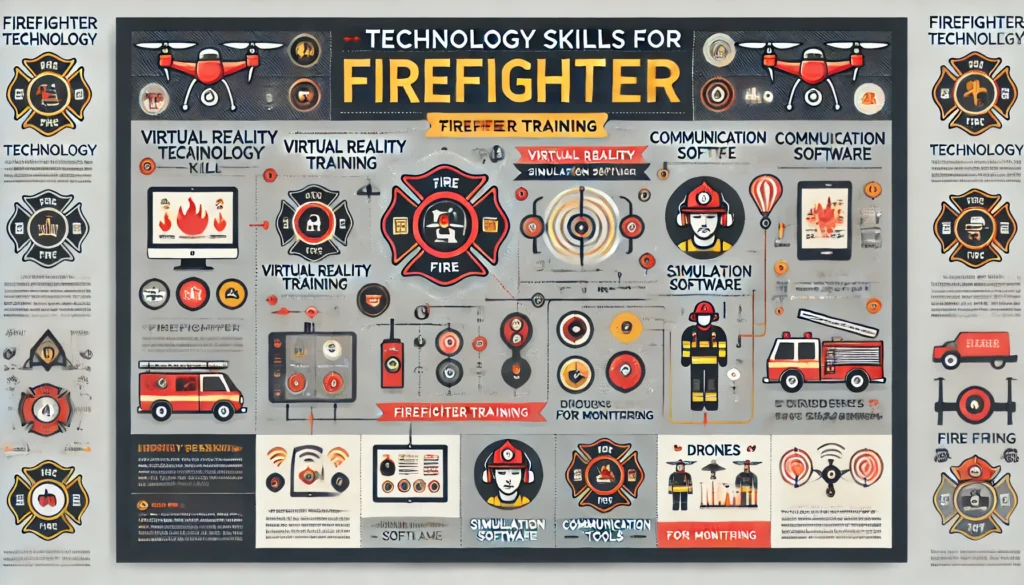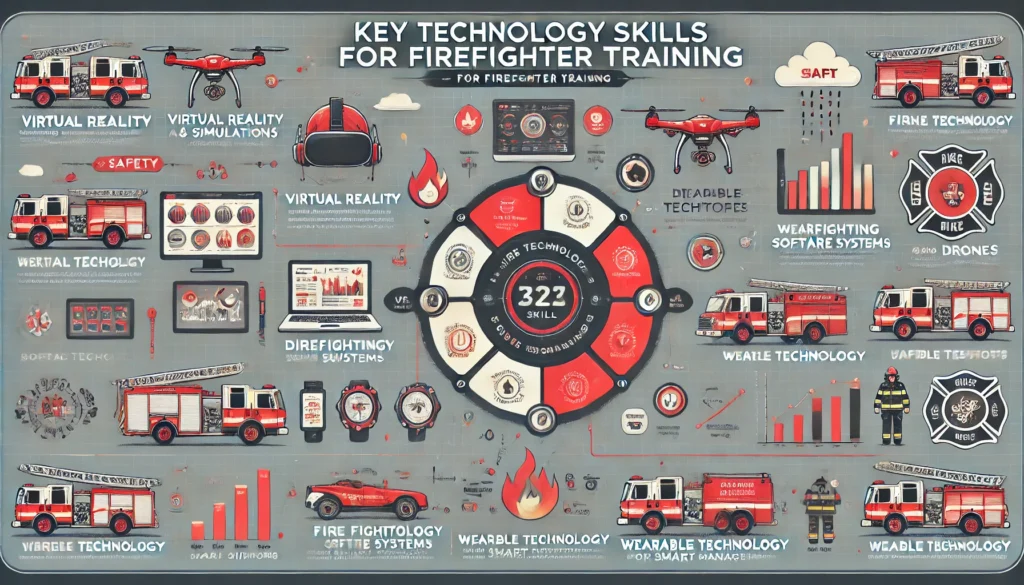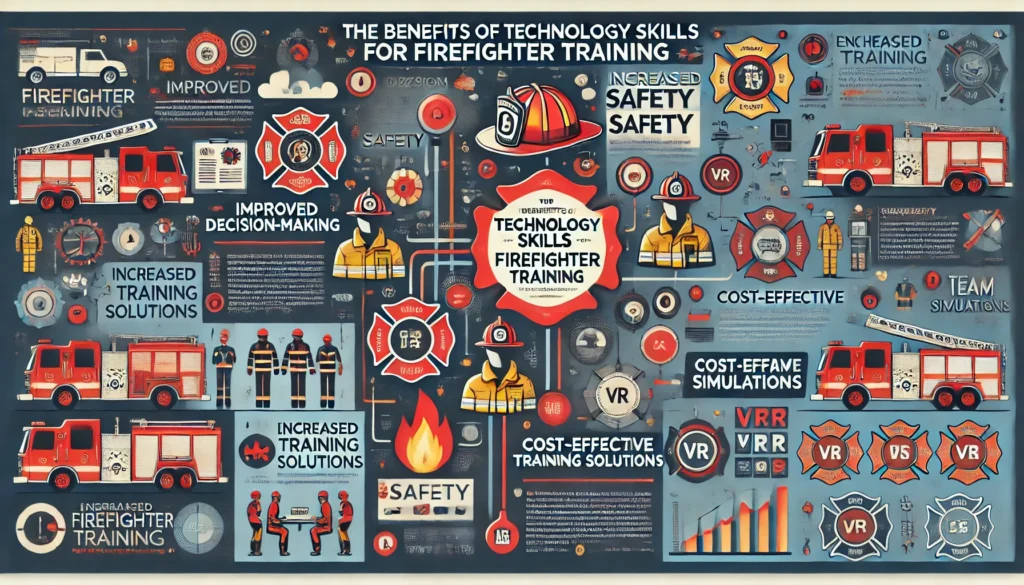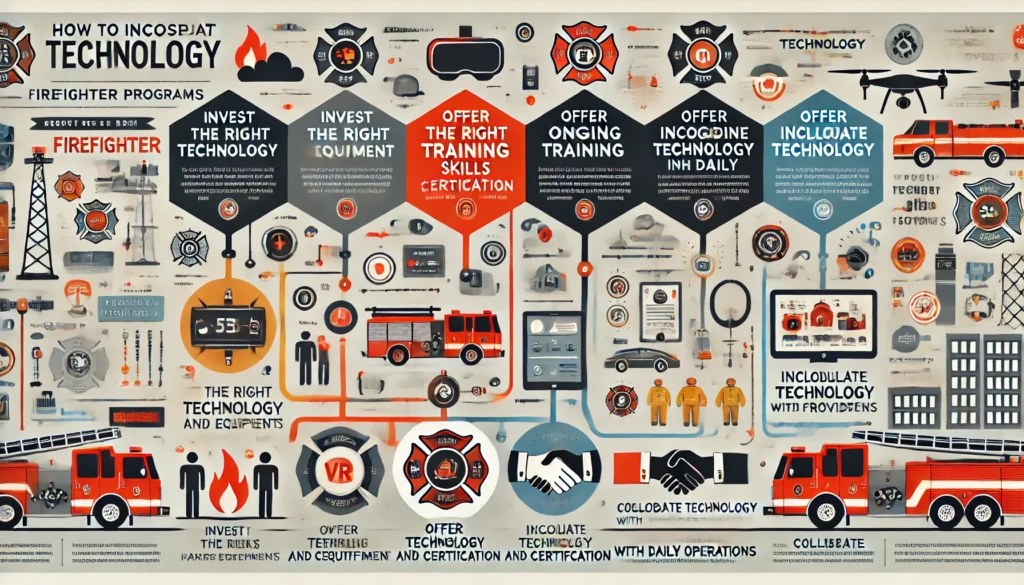In today’s rapidly evolving world, the integration of technology has transformed nearly every profession, and firefighting is no exception. Firefighters face numerous challenges, from complex fire scenarios to the need for rapid decision-making under pressure. Technology skills for firefighter training are becoming increasingly essential, allowing first responders to improve their readiness, enhance safety, and save lives. In this article, we’ll explore the technology skills that can elevate firefighter training and help fire departments stay ahead of the curve.

Why Technology Skills Are Critical for Firefighter Training
Firefighter training has traditionally relied on physical drills, hands-on exercises, and classroom learning. While these methods are still vital, technology has emerged as a powerful tool in shaping modern training programs. The integration of advanced technologies like virtual reality (VR), simulation software, and data analysis is enhancing firefighter performance in real-life situations.
By equipping firefighters with cutting-edge technology skills, departments can improve efficiency, decision-making, and overall safety. From using drones for aerial assessments to relying on real-time data during a fire operation, technology skills for firefighter training can make a significant difference in outcomes.
Key Technology Skills for Firefighter Training
To ensure firefighters are prepared for the challenges they will face, training programs must incorporate a variety of technological tools and techniques. Here are some of the essential technology skills that should be included in modern firefighter training:
Virtual Reality (VR) and Simulations
Virtual reality is revolutionizing firefighter training by offering realistic, immersive experiences. VR technology allows trainees to experience high-risk situations, such as navigating burning buildings or performing rescues, without putting anyone in harm’s way. This hands-on experience helps to build confidence, improve decision-making, and fine-tune physical skills. Firefighters can practice in a variety of scenarios, enhancing their ability to respond to emergencies with precision.
Drones for Aerial Support
Drones have become an invaluable tool for firefighters, offering a bird’s-eye view of fire scenes. Firefighter training programs should incorporate drone technology to teach trainees how to effectively deploy and operate drones in emergency situations. Drones help in assessing fire spread, locating victims, and providing situational awareness in hard-to-reach areas. With the right technology skills, firefighters can leverage drones to enhance safety and efficiency during operations.
Firefighting Software Systems
Fire departments are increasingly relying on specialized software to manage operations, from dispatch systems to fireground coordination. Training firefighters to use these tools is essential for ensuring smooth operations during emergencies. Firefighters need to be proficient in using mapping software, resource management systems, and real-time communication tools to stay informed and collaborate effectively with other emergency responders.
Wearable Technology and Smart Devices
Wearable technology is another game-changer in firefighter safety and efficiency. Devices like thermal imaging cameras, heart rate monitors, and GPS trackers are becoming more common in firefighting gear. By incorporating these technologies into firefighter training programs, trainees can learn how to effectively use them in high-stress environments. Wearables can provide real-time feedback on a firefighter’s condition, allowing for early intervention in case of distress or danger.
Data Analytics for Incident Management
Data analytics has found its way into firefighter training programs, allowing departments to analyze past incidents to predict future risks. By reviewing data collected from past fires, training programs can simulate future emergencies, helping trainees anticipate potential challenges. Additionally, data can be used to assess the performance of individual firefighters, providing valuable insights into areas of improvement and potential risks.

The Benefits of Technology Skills for Firefighter Training
Incorporating technology skills into firefighter training offers numerous benefits, both for the firefighters themselves and for the communities they serve. Here are some of the key advantages:
Improved Decision-Making
With access to real-time data and simulation tools, firefighters can make faster, more informed decisions during emergencies. Technology skills enable them to assess situations quickly, identify risks, and implement effective strategies to mitigate damage and save lives.
Increased Safety
Technology allows for better situational awareness, which directly impacts firefighter safety. Drones, wearable tech, and thermal imaging devices can help firefighters navigate hazardous environments more safely and effectively. Technology skills also contribute to improved communication, ensuring that firefighters stay in constant contact with their team and commanders.
Cost-Effective Training Solutions
Virtual simulations and other tech-driven tools offer cost-effective alternatives to traditional training methods. By using VR or computer-based simulations, fire departments can reduce the need for expensive physical drills and apparatus. This not only cuts costs but also ensures that firefighters can practice in diverse scenarios without the logistical constraints of live exercises.
Enhanced Team Coordination
Firefighting is a team effort, and technology skills are essential for fostering effective communication and collaboration. Software systems that enable real-time updates and mapping tools ensure that all team members are on the same page during emergencies. Firefighters who are proficient in these technologies can work more efficiently together, leading to better outcomes in the field.

How to Incorporate Technology Skills into Firefighter Training Programs
For fire departments looking to integrate technology skills into their training programs, the following steps can help ensure success:
Invest in the Right Tools and Equipment
Fire departments should prioritize investing in the latest training technologies, such as VR platforms, drones, and wearable devices. Ensuring that firefighters have access to the best tools is essential for maximizing the benefits of technology-driven training.
Offer Ongoing Training and Certification
Technology is constantly evolving, so firefighters need to stay up to date on the latest trends and tools. Offering ongoing training and certification programs ensures that firefighters remain proficient in the technology skills required for modern firefighting.
Incorporate Technology into Daily Operations
o make the most of technology skills for firefighter training, departments should integrate tech tools into everyday operations. Whether it’s using drones to monitor fire scenes or employing software to manage resources, firefighters should practice using technology in a variety of contexts.
Collaborate with Technology Providers
Fire departments should consider partnering with technology providers to ensure they are getting the best training tools available. Collaborating with companies that specialize in firefighting technology can help ensure that departments are using the most effective and cutting-edge tools.

Conclusion
The integration of technology into firefighter training is not just a trend—it’s a necessity. As technology continues to evolve, firefighters must develop the skills needed to leverage new tools that improve safety, efficiency, and decision-making in high-pressure situations. By prioritizing technology skills for firefighter training, fire departments can enhance the preparedness of their teams, ensuring they are ready to face the challenges of tomorrow.


